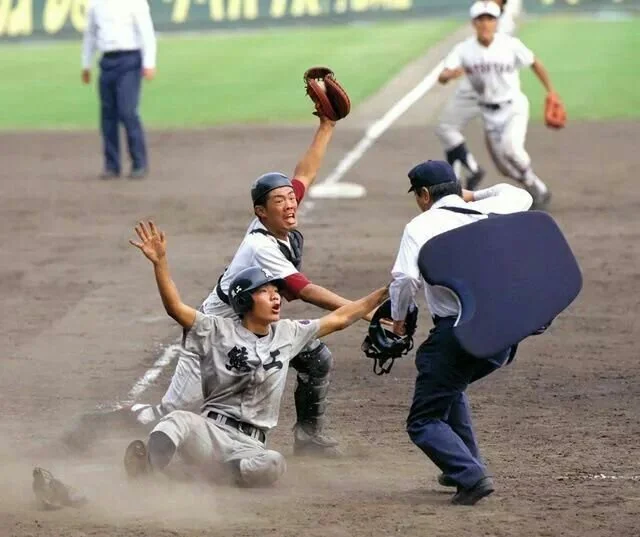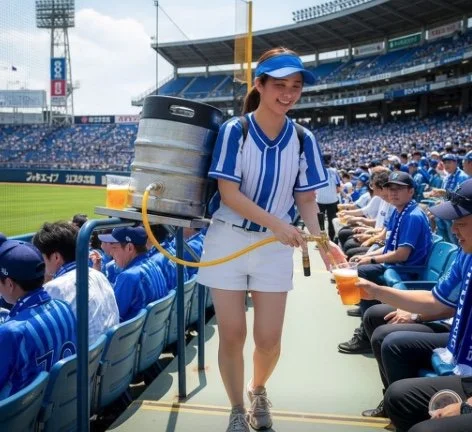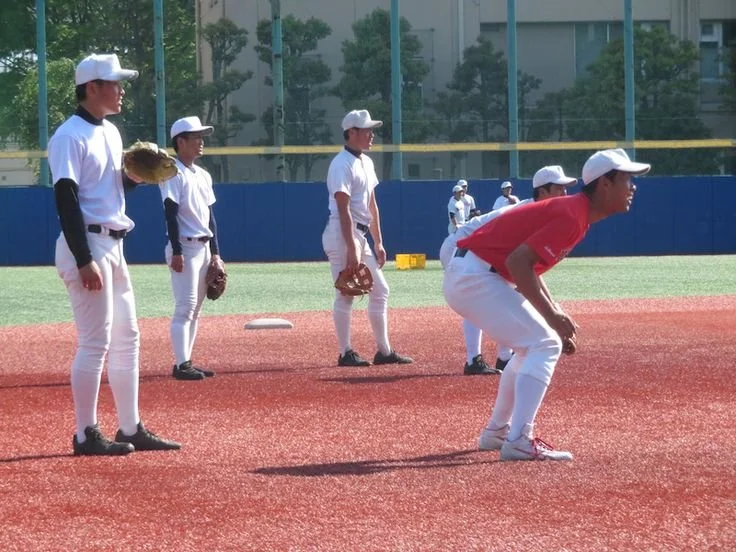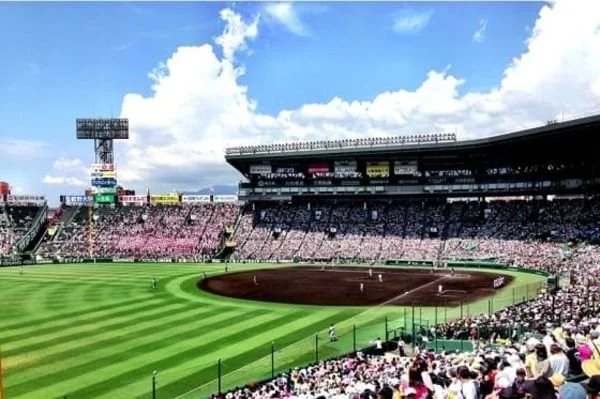Shohei Ohtani and the Spirit of Japanese Baseball
After Shohei Ohtani’s extraordinary performance in the 2025 NLC Championship Series — ten strikeouts, three home runs, and not a single earned run — I couldn’t help but write about Japanese baseball.
He represents more than athletic brilliance; he embodies the values that have defined the game here for over a century. Baseball arrived in Japan in the 1870s from the United States, but it has since evolved into something uniquely Japanese — a blend of Western sport and Japanese group ethics.
Growing up, my father and brother were devoted fans, so baseball was the background music of my childhood. I remember the excited voices of TV and radio announcers and the smell of summer evenings mixed with the sharp crack of a bat.
For many Japanese, baseball isn’t just a pastime; it’s a national mirror — reflecting quiet discipline, humility, and teamwork.
And for foreigners trying to understand Japan’s values, there’s no better classroom than the baseball field.
This blog covers:
1. Koshien Stadium: Japan’s “March Madness”
2. Japanese Baseball vs. U.S. Baseball: Fundamentals Over Power
3. Hazing vs. Bullying: Where Tradition Crosses the Line
4. Sports Small Talk
5. Q&A: Watching and Playing Sports in Japan
6. Wrap Up
1. Koshien Stadium (甲子園球場): Japan’s “March Madness”
Every summer, Japan comes to a halt for Koshien, the National High School Baseball Tournament. It’s held at Hanshin Koshien Stadium near Osaka and broadcast live for two straight weeks — you can watch some truly exciting games.
For those unfamiliar, think of it as Japan’s version of America’s March Madness — except the players are high school students in white uniforms, giving everything they have. Both tournaments share that same emotional intensity: athletes who play not for money, but for pride, school spirit, and the pure love of the game.
Teams from across the country battle through regional qualifiers, and when they reach Koshien, the stakes feel almost spiritual.
For many, this is the gateway to a professional baseball career. Shohei Ohtani, for example, played at Koshien twice but never won the championship.
The most striking thing for many foreigners is the sense of collective identity. Players run together, train together, even clean the stadium together. No star is above the team. Victory is shared; defeat is shared.
The tournament is actually held twice a year — in both spring and summer — and is broadcast nationwide on NHK (Nippon Hoso Kyokai, Japan Broadcasting Corporation).
A famous beer girl at baseball stadiums, who carries a mini keg on her back and serves beer. (AI-modified image)
2. Japanese Baseball vs. U.S. Baseball: Fundamentals Over Power
When Americans watch Japanese baseball for the first time, many notice subtle differences: fewer home runs, more bunting, and tighter defensive play.
The contrast reflects two philosophies.
In the U.S., baseball celebrates individual power — long balls, big contracts, and personal records. In Japan, the emphasis is on fundamentals — the small, repeatable actions that collectively build victory: precise pitching, sacrifice bunts, situational hitting, and nearly flawless defense.
Coaches often say, “A team that executes the basics perfectly will usually win.”
Players train with relentless repetition — fielding grounders, practicing the same swing hundreds of times, running drills until movement becomes muscle memory. It’s less about expression and more about harmony.
You can feel this difference in the atmosphere of the games.
American baseball is full of showmanship — players flip bats, fans chant individual names.
Japanese baseball feels choreographed: coordinated cheer squads, trumpet sections, and rhythmic hand-clapping that unites the entire stadium. To be honest, I prefer American atmosphere.
Teams across the U.S. each have their own unique quirks and traditions. Take the Chicago Cubs, for example: after every win, their mascot races across the field waving a big “W” flag, while the fans erupt in a chorus of “Go Cubs Go!” Pure electricity.
Or the Boston Red Sox, where at the bottom of the eighth inning, the crowd belts out Neil Diamond’s classic, “Sweet Caroline.” These traditions — these moments — are what make the fan experience unforgettable!
For expats or international managers, this comparison offers a subtle workplace insight:
In Japan, precision and predictability often matter more than raw power or improvisation.
A “team of nine” truly means all nine must act as one.
So, when people wonder why Japanese companies value process, documentation, and teamwork so highly, you might say — watch a baseball game.
My Story:
When your team loses in the U.S., it’s always interesting — and sometimes funny — to see how emotional fans get. The way they express their passion. People can get really mad at the team or even at a specific player. I once heard someone yell, “Your next job is at the McDonald’s next to Wrigley Field!” Wow. I thought, Japanese fans would not say something like that.
3. Hazing vs. Bullying: Where Tradition Crosses the Line
Like any sport, Japanese baseball isn’t free from its darker side.
Every few years, news emerges about high school players involved in bullying. In 2025, a strong regional team was forced to withdraw from the national tournament after a confirmed case of violence by senior players against junior teammates came to light.
To understand why this happens, we need to look at the blurred line between hazing and bullying. Traditional hazing has long been part of Japanese sports culture. The idea is that enduring tough physical and emotional challenges builds team unity.
But when that line crosses into humiliation, verbal abuse, or exclusion, it becomes bullying, not character-building.
Hazing itself isn’t unique to Japan. American college fraternities (my husband survived “hell week”), military academies, and even sports teams have faced similar issues — when the goal of “team bonding” slips into intimidation or abuse. The real difference lies in intention — whether it’s a genuine effort to build unity or a harmful act meant to hurt others.
Modern coaches are becoming more aware of this distinction, and it reflects a broader generational shift: Japan is re-examining whether endurance should still be the highest virtue.
Many young athletes — and workers — now believe that teamwork can also be built through open communication, not just shared suffering.
4. Sports Small Talk
In American offices, small talk before a meeting often starts with sports:
“Did you catch the Cubs game last night?”
“How about those Dodgers?”
It’s a safe, friendly way to warm up before business.
When I worked with American colleagues, this was almost a ritual before global conference calls. Someone would mention baseball, football, or Olympic games, and the conversation would roll naturally — a few laughs, some quick opinions, then business.
Japanese participants, however, often stayed silent. It wasn’t because they didn’t care.
They simply didn’t feel comfortable jumping into casual English conversation or expressing strong opinions. Sports talk — meant to break the ice — sometimes created the opposite effect: polite silence.
This moment says a lot about communication style.
In Japan, silence is safe. In Western culture, talking is connecting.
Both sides mean well, but the rhythm of small talk differs.
If you’re a foreigner working in Japan, understanding this can help you read the room better.
Instead of forcing a quick sports banter, try something observational and inclusive:
“I heard high-school baseball is huge here — are you following Koshien this year?”
That kind of question lets Japanese colleagues share proudly, without feeling put on the spot.
And you might discover a great conversation — not just about baseball, but about how people value teamwork, persistence, and even nostalgia.
5.Q&A: Watching and Playing Sports in Japan
If Shohei Ohtani’s record-breaking performance or Koshien’s energy makes you want to experience Japanese sports firsthand, here’s how to get started.
Q1. How can I get a ticket to see baseball in Japan?
A1. The Japan Series (NPB championship) usually takes place in late October to early November, so tickets for that sell out quickly. (It starts Oct 25, 2025.)
For regular season games, you can buy tickets directly from team websites, the official NPB (Nippon Professional Baseball) site, or convenience-store systems such as Lawson Ticket (Loppi), Seven Ticket, and E-Plus (e+). Many sites now offer English options or use-friendly interfaces.
Tip: Popular teams like the Hanshin Tigers or Yomiuri Giants often sell out early, so plan a few weeks ahead.
Q2. Can you watch Dodgers games in Japan?
A2. You can’t usually watch full MLB games live on regular Japanese TV, but you can follow real-time scores and highlights easily on-line.
Streaming services like AbemaTV, Apple TV’s MLB channel, and DAZN Japan occasionally show MLB content or highlights, especially when Shohei Ohtani or other Japanese players are involved.
YouTube and official MLB apps also post daily highlight clips.
Q3. Are there any sports seasons I should know about in Japan?
A3.
Baseball: Late March to October (NPB season)
Soccer (J.League): February to December
Sumo: Six tournaments yearly (see above)
Rugby: November to May (Japan Rugby League One)
Tennis & marathons: Spring and autumn are peak seasons due to mild weather.
Hakone Ekiden: Held every January 2–3, this is Japan’s most famous university relay marathon, running from Tokyo to Hakone and back (a total of 217 km). It’s broadcast live nationwide on NTV (Nippon Television) and watched by millions during the New Year holidays.
Even people who don’t usually follow sports often tune in — the teamwork, endurance, and spirit make it deeply moving and uniquely Japanese. Watching runners push themselves to the limit, collapsing after passing the sash (tasuki) to the next teammate, is truly moving. It’s my personal recommendation to watch — you can really see what Japanese people value and love about sports.
Q4. How about Sumo Wrestling?
A4. Sumo tournaments are held six times a year, each lasting 15 days.
The locations are:
Tokyo – January, May, and September (Ryogoku Kokugikan)
Osaka – March
Nagoya – July
Fukuoka – November
Tickets can be purchased on the Japan Sumo Association’s English site or at convenience stores in Japan. For first-timers, Tokyo’s Ryogoku Kokugikan is the easiest and most accessible venue.
Q5. Where can I find places and people if I want to play sports?
A5. It depends on the sport, but many cities have community sports centers (体育館 / taikukan) where you can rent courts or join local clubs.
Websites such as Meetup or Facebook groups help foreigners find pickup games for tennis, basketball, volleyball, or futsal.
Running is also one of Japan’s most popular sports. You’ll find marathons and fun runs held throughout the year — not only full 42.195 km races, but also shorter 5 km or 10 km courses for beginners. Many cities have riverside running paths (like along the Sumida River in Tokyo or Kamo River in Kyoto) and community jogging clubs that welcome newcomers.
⚾ 6.Wrap Up⚾
When I lived in the U.S., several Japanese baseball players were also making their way there to challenge themselves on the global stage. One of them was Kosuke Fukudome of the Chicago Cubs, and I even bought his jersey — his performance always lifted my spirits.
If you love sports, Japan has plenty to enjoy — baseball, tennis, volleyball, soccer, and rugby are all popular here. However, ice hockey and American football remain relatively small compared with other countries.
Whether you play or watch, enjoy sports in Japan!






